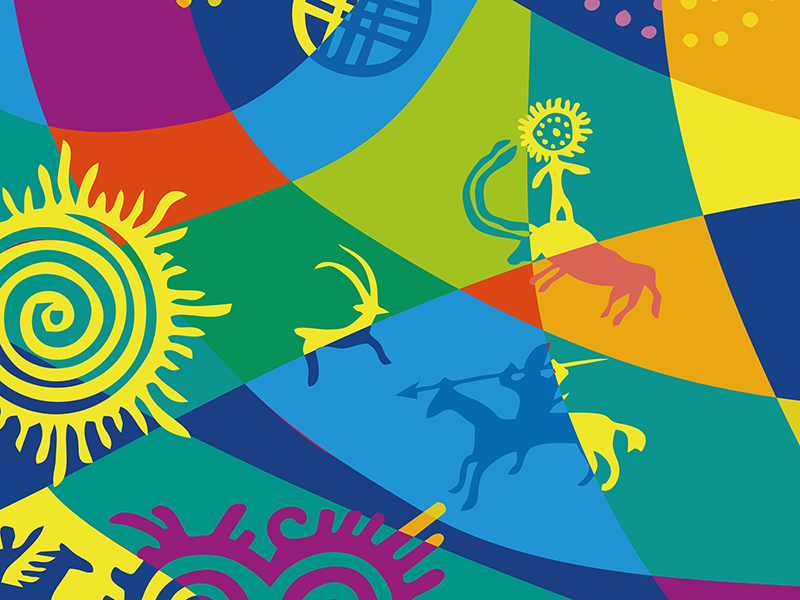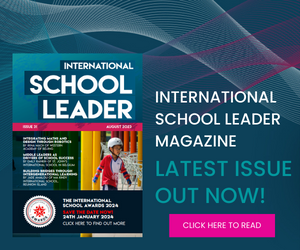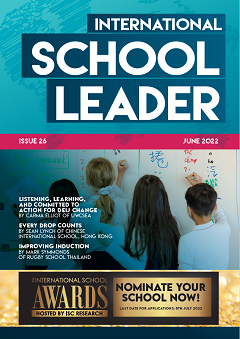By Lauren Jones
‘Mwaramutse!’ was the first word of Kinyarwanda that I heard, and it was during the first week of school. The word means good morning, in the local language of Kinyarwanda. I watched a student that had been at International School of Kigali (ISK) for years look blankly at the warm, smiling assistant that had just greeted him. Moments like these continued to impact me. The disconnect was blatant. Our students were living in a bubble, largely isolated from the local culture and language. Rwandan Culture Week was the moment I decided something had to change. We were spending only a week celebrating the culture we are lucky enough to live in every single day.
Soon after, we recruited and hired a full-time Rwandan culture teacher, and the Rwandan culture programme was developed and implemented this academic year with much energy and success. Our Rwandan Culture Week was a culmination of a year’s worth of learning, experiences and field trips that showcased our students’ connection with our local community and culture.
Our music teacher resigned very late in the year in 2022. Our visual arts teacher had already informed us that she would not be returning. We began recruitment for both positions, but then stopped. A collaborative conversation between some members of our team bore an innovative idea that was in alignment with our vision for connecting our kids and school with the local community. We weren’t hiring one arts and music teacher. We were hiring 13 of them.
Our integrated arts programme was a picture of ‘building the plane as you fly it’. I won’t lie to you, it was hard. It was more stressful and labour-intensive than just hiring the two teachers like our school had always had. But it was also more rewarding. Watching our students connect with 13 different visiting artists, 11 of which were African and majority Rwandan was priceless. Our students learned fashion design, acrobatics, weaving, storytelling, muraling, portrait painting, public speaking, classical music and jewellery making.
I recall walking into a high school arts class and it was so quiet. All of the students were weaving. The teachers are women with disabilities, and they do not speak English. They’ve taught all of our students how to weave without using words. We call it ‘Talking through Art’. The moment was therapeutic; connecting with no words, learning without verbalising. These moments permeated our integrated arts and culture programme. The bubble was shrinking.
You must have questions. What about the standards? Budget? Logistics? Child protection?
Our visiting artists submitted lesson plans before coming to teach their module. Our curriculum coordinator is working to align those lessons with the standards. The budget for this project, which included two school assistants to support the visiting artists, was still under the cost of hiring a full-time expat music and art teacher. All visiting artists completed onboarding, orientation and child protection before they could work with our students.
As I said, the programme was a huge undertaking, with an even bigger reward. It will continue; we will alternate artists over the course of the years so students are exposed to even more diversity of art and music. Some artists will return annually to continue building students’ skills.
The energy and creativity that has blossomed thanks to implementing the local culture and integrated arts programme cannot be described in words. We have hosted our largest events in the school’s history this year, and the marketing and exposure has been invaluable. Bubbles exist across international schools – students are often isolated from the local language, people and culture. My call to you is to find ways to shrink that bubble. Let’s bring people, programmes and connections into our students’ lives that will broaden their worldview and their relationship with the local community.
Tips and recommendations
Our culture and arts programme came from innovative thinking and risk taking. Look at your programming – what could change or shift to bring in more connection with your local context? What are the obstacles or fears with that shift? Talk it through with your team and find a way forward.
Be willing to roll up your sleeves and make some mistakes. I probably put in four times the amount of time into the arts and culture programme by making these changes this year. I made mistakes. We hosted our first art auction and it was a huge success but took two-and-a-half hours (the students were waiting to perform and didn’t come on stage until 8pm). Be ready to take ownership of mistakes and be vulnerable to tell others that you are trying new things and will need some flexibility and grace along the way. Ask for help when you need it.
Know your context and make your expectations clear. We all work internationally so this idea is not new, but when embarking on programmes like our culture and integrated arts programme, the rules apply even more. We are all operating in different cultures, so the clearer we can be about expectations, the more seamlessly things will flow.

Lauren Jones is the departing Director of the International School of Kigali and an educational consultant focusing on inclusive systems, behaviour management and alternative programming. You can connect with her directly at [email protected] and laurenjonesconsulting.com



